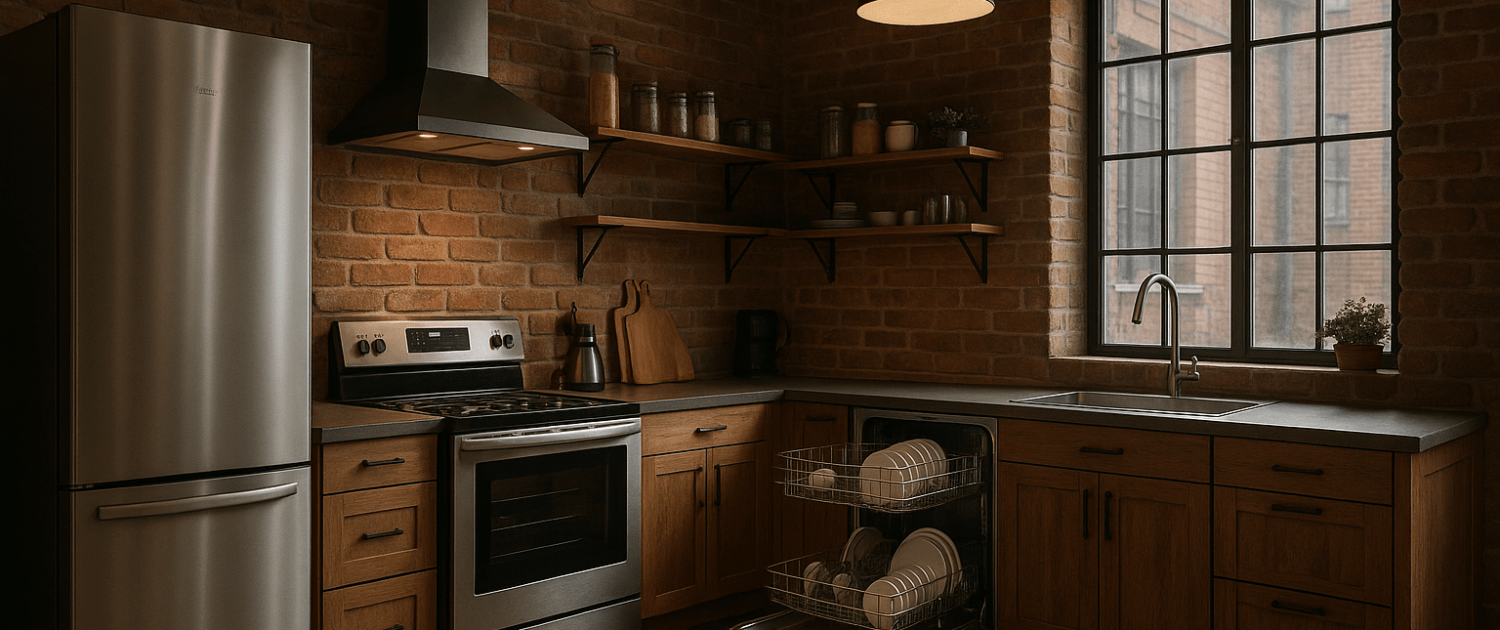Carbon Monoxide and Gas Appliances: What You Need to Know
Steven E / Monday July 14, 2025
You can’t see it, smell it, or taste it, but carbon monoxide (CO) is a serious risk in any home with gas appliances. The good news? With just a little awareness and a few smart steps, you can keep your family safe. Here’s what every homeowner needs to know about carbon monoxide and your gas appliances.
What Is Carbon Monoxide?
Carbon monoxide is a byproduct of burning fuel. Any time natural gas, propane, oil, or wood is burned, it produces small amounts of CO. When your appliances are properly installed and vented, the CO safely exits your home. But when something goes wrong, a blocked vent, a faulty part, or incomplete combustion, CO can build up indoors to dangerous levels.
Even small amounts of carbon monoxide can make you feel sick. Higher levels can be deadly. That’s why knowing how your appliances work and keeping them in good condition is so important.
How Gas Appliances Can Produce CO
Gas appliances are designed to burn fuel cleanly and efficiently, turning gas into heat, water vapor, and carbon dioxide. But if something interrupts that process, incomplete combustion can occur. That means more CO is produced than normal, and if it’s not vented properly, it can enter your living space.
Here are a few common reasons gas appliances might start producing too much CO:
- Blocked or damaged venting: Flues or chimneys clogged with debris can prevent gases from escaping.
- Cracked heat exchangers: A cracked part in a furnace or water heater can leak exhaust into your home.
- Improper air mixture: Burners that are dirty, misaligned, or clogged can create an improper fuel-to-air ratio, producing more CO.
- Malfunctioning safety parts: Thermocouples, flame sensors, and gas valves all play a role in proper combustion.
The good news is that all of these issues are preventable and easy to repair once you know what to look for.
Symptoms of Carbon Monoxide Exposure
Because CO has no smell or color, you can be exposed without realizing it. That’s why it’s sometimes called “the invisible killer.” Learning the symptoms of CO exposure can save lives.
Mild exposure symptoms:
- Headache
- Dizziness
- Nausea
- Fatigue
- Confusion
Severe exposure symptoms:
- Vomiting
- Chest pain
- Loss of coordination
- Loss of consciousness
If you or your family experience these symptoms, especially if they improve when you leave the house, it could mean CO is building up in your home.
Gas Appliances That Can Produce CO
Any appliance that burns gas has the potential to produce CO if it’s not working properly. Here are the most common ones to keep an eye on:
- Furnaces: Your furnace is one of the biggest sources of combustion in your home. Cracked heat exchangers, blocked vents, and dirty burners are common culprits for CO leaks.
- Water Heaters: Gas water heaters also have burners and vents that can become blocked or damaged over time.
- Gas Stoves and Ovens: Cooking appliances should burn with a steady blue flame. Yellow or orange flames can mean incomplete combustion.
- Fireplaces and Gas Logs: Ventless fireplaces are designed to burn cleanly, but dirty burners or blocked air intake can still produce CO.
- Space Heaters: Portable gas heaters should always be used with caution and proper ventilation.
Key Parts to Inspect and Maintain
You don’t need advanced tools or training to spot and replace some of the most common parts that keep your gas appliances burning cleanly. Here are a few examples of parts worth checking:
- Burners: Burners that are clogged with dust, lint, or rust can cause uneven flames and produce more CO. Cleaning or replacing burners can improve combustion.
- Flame Sensors and Thermocouples: These safety parts monitor the flame and shut off the gas if the flame goes out. If they are dirty or worn, they might allow gas to flow without a proper flame.
- Heat Exchangers: Over time, heat exchangers in furnaces can crack. While harder to inspect without removing panels, a visual inspection for rust and corrosion is helpful.
- Vent Pipes and Chimneys: Check for blockages, disconnections, or corrosion that could keep exhaust gases from leaving your home.
- Pilot Lights: If your pilot light won’t stay lit or burns yellow instead of blue, it may indicate a combustion problem.
How to Spot a CO Problem in Your Appliances
Along with symptoms of exposure, your appliances may also show signs that CO is leaking into your home. Watch for:
- Soot, streaks, or rust around vent pipes or on the appliance
- Pilot lights that keep going out
- Yellow or flickering burner flames (instead of steady blue)
- Excess moisture or condensation on windows near the appliance
- Rust or corrosion on vent pipes
If you notice any of these, it’s time to shut off the appliance and take action to identify and fix the problem.
The Importance of CO Detectors
Even with proper maintenance, it’s smart to install carbon monoxide detectors throughout your home. Place them near bedrooms, living areas, and any room with a gas appliance.
Detectors will sound an alarm if CO levels rise, giving you precious time to address the problem and get to safety if needed.
Check your detectors regularly, replace batteries on schedule, and replace the detector itself every 5–7 years.
Seasonal Maintenance Tips
Different times of year can put different demands on your gas appliances. Here’s how to stay ahead of problems:
Before Winter
- Check your furnace burners and heat exchanger for rust or cracks
- Inspect and clean vent pipes and chimneys
- Test all CO detectors and replace batteries
Before Summer
- Service your water heater, especially if it’s been working harder in the winter
- Clean gas grill burners if you use a natural gas or propane grill
Where To Find Us
If you need any replacement parts for your appliances, you can enter your model number at AppliancePartsPros.com to locate and order them quickly. Most orders arrive in just two business days, and we have tons of great information in our repair help section and YouTube videos to help you troubleshoot.
Stay connected with the latest DIY tips, tutorial videos, and repair guides by following us on Facebook, Instagram, and Twitter. We love hearing about your repair stories and successes. If you need more help or want personalized guidance, feel free to reach out. We’re ready to help you take on your next project with confidence!
The information in this article may not apply to your specific appliance model. We recommend consulting your manufacturer’s documentation or contact us with any questions.
With nearly a decade of experience in providing top-notch customer service regarding appliance parts and repair, Steven enjoys sharing practical advice, troubleshooting tips, and interesting information to help readers stay informed.





